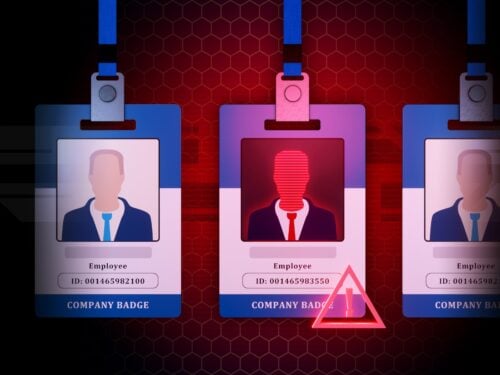Detecting Insider Threats: Safeguarding Your Organization from Within
 In the ever-evolving landscape of cybersecurity, detecting insider threats remains one of the most challenging objectives to manage. Unlike external attacks, insider threats can be especially damaging because they originate from within the organization and often leverage legitimate access to cause harm. According to Verizon’s 2024 Data Breach Investigations Report, 23% of all breaches involved internal actors, underscoring the prevalence and potential impact. For CISOs, IT professionals, and risk managers, staying ahead of these threats is paramount to prevent significant financial losses, reputational damage, and operational disruptions. We’ll share strategies for detecting insider threats, the different types of insider threats, and tips for mitigating these risks.
In the ever-evolving landscape of cybersecurity, detecting insider threats remains one of the most challenging objectives to manage. Unlike external attacks, insider threats can be especially damaging because they originate from within the organization and often leverage legitimate access to cause harm. According to Verizon’s 2024 Data Breach Investigations Report, 23% of all breaches involved internal actors, underscoring the prevalence and potential impact. For CISOs, IT professionals, and risk managers, staying ahead of these threats is paramount to prevent significant financial losses, reputational damage, and operational disruptions. We’ll share strategies for detecting insider threats, the different types of insider threats, and tips for mitigating these risks.
The 3 Types of Insider Threats
Insider threats can be broadly categorized into three types: malicious insiders, negligent insiders, and compromised insiders.
- Malicious Insiders: These are employees or contractors who intentionally cause harm to the organization. Their motivations can range from financial gain to revenge. A notable case is the attempted insider attack on Tesla in 2020, where a Russian agent tried to bribe a Tesla employee to install malware on the company’s network. The agent, Egor Igorevich Kriuschkov, offered the employee $1 million to install malware on Tesla’s network. The employee’s prompt reporting allowed Tesla to avoid a potential disaster and highlighted the importance of fostering a security-conscious culture within the organization. While this example worked out for the organization, many other organizations aren’t so lucky. Ransomware gangs have posted ads offering large payouts to recruit corporate insiders to provide access. For example, the Lockbit ransomware gang posted on their dark web site, “Would you like to earn millions of dollars? Our company acquire access to networks of various companies, as well as insider information… You can provide us accounting data for the access to any company, for example, login and password to RDP, VPN, corporate email, etc. Open our letter at your email. Launch the provided virus on any computer in your company.” Detecting insider threats from malicious insiders is a challenge, but we’ll offer some strategies later in this blog.
- Negligent Insiders: These team members do not intend to cause harm. However, they inadvertently create security vulnerabilities through careless actions, such as mishandling sensitive information or failing to follow security protocols. The Ponemon Institute’s 2023 Cost of Insider Risks Global Report found that negligent insiders are responsible for the majority of insider incidents, with an average cost of $4.58 million per incident. In good news, we’ll share tips to dramatically reduce this risk later in this blog.
- Compromised Insiders: These individuals are unwittingly manipulated by external attackers who gain access to the organization’s systems through phishing or social engineering attacks. The Coalition 2024 Cyber Claims Report features a case where a financial firm was attacked through a vulnerable boundary device. The incident was traced back to compromised credentials from an insider who unknowingly provided access to the attackers. This case underscores the need for robust monitoring and quick incident response to mitigate the impact of insider threats.
Now that you understand the types of threats, let’s dive into tactics for detecting insider threats.
Detecting Insider Threats
Detecting insider threats is challenging and requires a multifaceted approach that combines technological solutions with human vigilance. Here are some effective strategies:
- Behavioral Analytics: Implementing user and entity behavior analytics (UEBA) can help detect abnormal activities that may indicate an insider threat. By establishing a baseline of normal behavior, UEBA systems can flag deviations, such as unusual access patterns or data transfers, for further investigation.
- Access Controls and Monitoring: Implementing a policy of least privilege throughout your organization is a cybersecurity best practice. You should also regularly review and update access controls to ensure that employees only have access to the information necessary for their roles. Continuous monitoring of access logs and real-time alerts for suspicious activities can help you detect insider threats.
- Employee Training and Awareness: Educating employees about the importance of cybersecurity and the risks of insider threats is crucial. Training programs should cover how to recognize social engineering attempts and the importance of following security protocols. If you would like an expert to manage the training selection and implementation for you, consider our managed employee cybersecurity awareness program. You can also read our blog on 8 tips to turn your employees into a human firewall, learn why cybersecurity training was the top security control for Q2 2024, and download our tip sheet on how to spot a phishing email.
- Data Loss Prevention (DLP) Tools: DLP solutions can monitor and control the movement of sensitive data within and outside the organization. These tools can prevent unauthorized data transfers and alert security teams to potential breaches.
- Incident Response Planning: Having a robust incident response plan in place ensures that the organization can quickly and effectively respond to insider threats. The plan should include clear procedures for investigation, containment, and remediation of insider incidents. Read our blogs on IR planning and IR training tips.
Build a Proactive Insider Threat Prevention Program
Effectively detecting and mitigating insider threats requires you to build a proactive insider threat prevention program. Our team recommends the following activities to reduce your risk:
- Risk Assessment: Conduct regular risk assessments to identify potential insider threat vectors and evaluate the effectiveness of existing controls. This helps in understanding the unique risks faced by the organization and prioritizing areas for improvement.
- Policy Development: Develop clear policies and procedures related to data access, usage, and handling. Ensure these policies are communicated to all employees and regularly reviewed to address emerging threats. If you need help our expert advisory team can work with you to customize policies that meet your business and cybersecurity needs.
- Cross-Departmental Collaboration: Foster collaboration between IT, HR, legal, and other departments to create a comprehensive insider threat program. This collaboration ensures that insider threat detection and response efforts are well-coordinated and effective. For more information read our blogs on creating a strong security culture and closing security gaps through cybersecurity collaboration.
- Technology Integration: Integrate various security technologies, such as UEBA, DLP, and Security Information and Event Management (SIEM) systems to create a unified threat detection and response framework. This integration enhances visibility and enables more effective detection of insider threats.
- Regular Training and Drills: Conduct regular training sessions and simulation drills to prepare employees for potential insider threat scenarios. This helps in reinforcing security awareness and ensuring that employees know how to respond in case of an insider threat incident. Read our blog to learn our favorite tabletop exercise training scenarios and how they can reduce your risk.
Detecting insider threats is a complex but critical aspect of cybersecurity. Organizations must adopt a proactive approach that combines advanced technologies with comprehensive employee education and stringent access controls. By doing so, your organization can mitigate the risks associated with insider threats and protect your valuable assets from within. As the threat landscape continues to evolve, staying vigilant and continuously improving security measures will be key to safeguarding against these internal dangers.
We hope you found this information helpful! Please contact us if you need help with technical testing, policy or plan consulting, cybersecurity solutions, and training.

